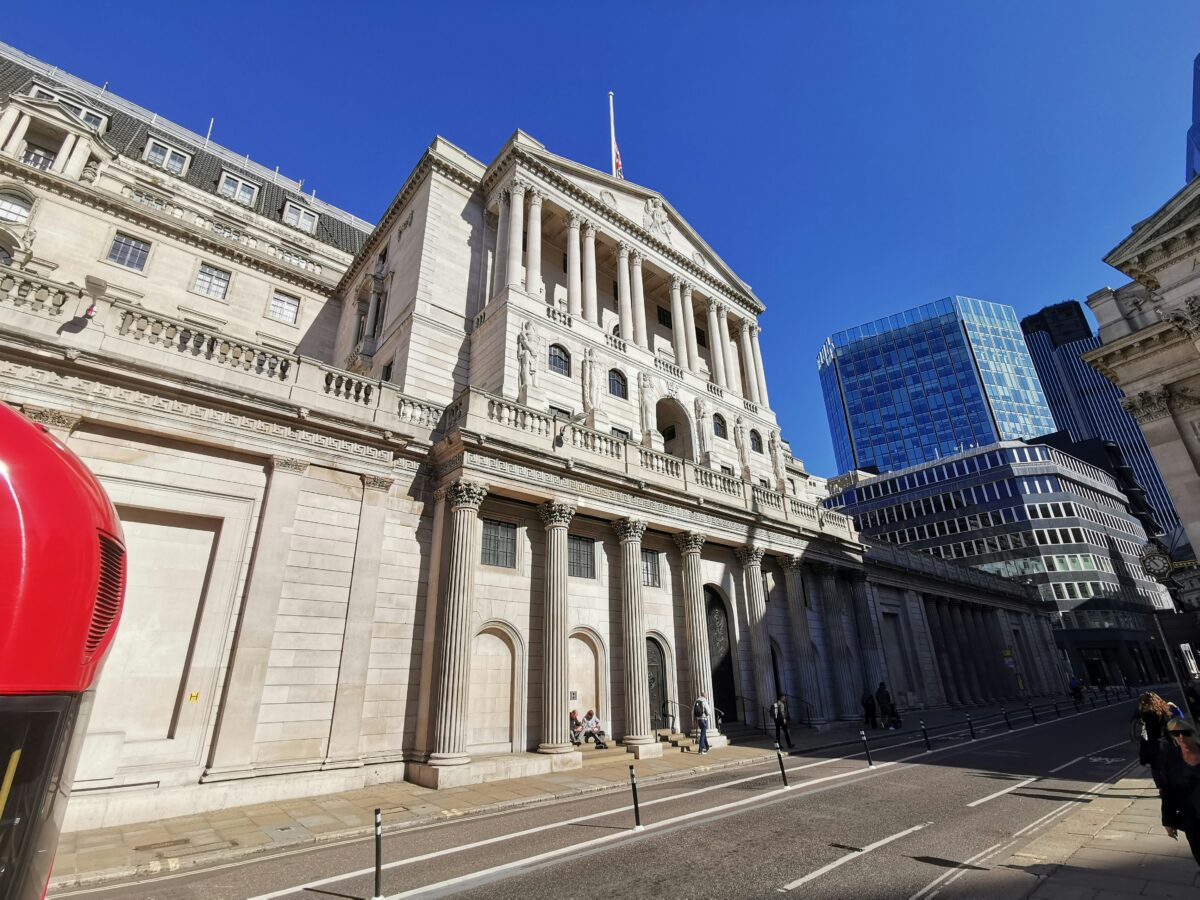Today’s announcement from the Bank of England that the MPC has decided to cut UK interest rates from 5% to 4.75% had been widely anticipated.
With UK inflation coming in below the Bank’s 2% for the September print at 1.7%, it’s clearly given the MPC enough scope to make this further cut. The rate cutting cycle was started in August, when the Bank cut rates from 5.25% to 5%.
The OBR has said that last week’s budget is likely to lead to higher inflation and interest rates than would otherwise have been the case and so the Bank’s quarterly report – also issued today – will be watched keenly to gauge sentiment as to where rates, their inflation and growth forecasts might head in the months to come. Also later today, the US Federal Reserve will be announcing their next interest rate decision so there’s plenty for wealth managers and their teams to consider hard on the heels of yesterday’s US election and last week’s UK budget.
In response to today’s interest rate news, investment strategists have been sharing their views on what it means for markets and for the UK economy as follows:
James Carter, Portfolio Manager at Waverton Investment Management says: “The Bank of England’s decision to cut interest rates by 25 basis points aligns with market expectations, reflecting a prudent response to a subdued growth outlook and a further easing in inflation.
“While such a move would typically be welcomed by markets, recent attention has shifted from concerns over short-term rates, inflation, and recession risks to the sustainability of fiscal policy. Notably, since the Bank’s initial rate cut on July 31, inflation has eased from 2.2% to 1.7%, yet the 10-year Gilt yield has climbed sharply from 3.97% to 4.55%.
“Despite concerns over fiscal sustainability and the substantial debt issuance required to fund new spending, we are increasingly bullish on Gilts at these levels. Our stance is driven by expectations of continued economic challenges, inflation stabilizing near the Bank of England’s target, and real yields – a key valuation measure – reaching their highest level since 2007.”
Zara Nokes, Global Market Analyst at J.P. Morgan Asset Management (JPMAM): “The Bank of England (BoE) made the correct decision to deliver what markets were expecting and cut interest rates today. However, the pace of cuts from here has been muddied by recent political developments. The UK economy is now contending with a number of cross-currents which make the growth and inflation outlook highly uncertain.”
“Last week’s UK Budget revealed plans for front-loaded fiscal stimulus which – at a time when the supply side of the economy is constrained – risks stoking inflation next year. The return of President Trump to the White House adds another layer of complexity. While there is still a high degree of uncertainty as to what the next Republican administration will enact when in office, tough protectionist measures could be a headwind for global growth and the UK may be vulnerable given the openness of its economy. For these reasons the Bank should be very wary of giving concrete forward guidance on the pace of further cuts. In our view, with the underlying dynamics of the domestic economy pointing to inflation lingering for some time, the Bank should resist cutting too quickly”
Jeremy Batstone-Carr, European Strategist, Raymond James Investment Services said: “The Bank of England’s Monetary Policy Committee (MPC) has voted to cut the UK base rate for the second time this year, in line with the gradual approach to loosening monetary policy which was highlighted at September’s meeting. A dip in headline consumer price inflation below the Bank’s 2% target, its lowest level in over three years, was a strong determining factor lying behind today’s decision.
“Other economic indicators the Bank is watching closely include service sector prices, which fell modestly to 4.9%, and private sector wages, which are on a descending path. Overall, data shows that economic activity is more subdued than expected, and that the economy could do with a helping hand in the lead-up to the busy Christmas season.
“With this being the MPC’s first meeting following Rachel Reeves’ Budget announcement, today’s economic forecasts incorporate the views of the Office for Budgetary Responsibility. The Chancellor’s decision to loosen fiscal policy is expected to provide a boost to demand in the medium term, though the MPC remains wary. A cautious approach going forward also nods in response to the results of the US presidential election this week, the impact of which on future trade policy and the global economy are yet to be established.”
Chris Arcari, Head of Capital Markets says: “US equity markets surged yesterday as investor’s were buoyed by potential tax cuts and a lighter-touch approach to regulation under a Trump presidency. Treasury yield also rose sharply, adding to October’s rise, as both stronger near-term growth and potential inflationary pressures from trade tariffs and a crackdown on migration, led to expectations that interest rates might stay higher for longer. US bank stocks, in particular, rose strongly on the back of higher-for-longer rate expectations and looser regulations, with the oil and gas sector also benefitted. The Japanese yen, euro, Mexican peso all fell. The Japanese equity market benefitted from yen weakness while European markets sagged in anticipation of more difficult trading conditions ahead for some of the region’s largest manufacturers, with German autos particularly exposed.
“Despite the larger than expected rise in net spending unveiled in the autumn budget, and the OBR’s forecast of higher near-term inflation as a result, the Bank of England (BoE) has today lowered rates by 0.25% p.a. – only the second reduction this year. Headline inflation came in at a below-target pace of 1.7% year-on-year in September and while still elevated, service sector and wage inflation are coming down more quickly than the BoE anticipated in their previous monetary policy report. This opened the door for the BoE to make today’s change and lower interest rates, while still maintaining a relatively restrictive policy stance. The front-loaded nature of the spending and the OBR’s forecast impact on near-term growth and inflation has seen the market shift to expect a slower pace of rate cuts from the Bank of England.”
Janet Mui, head of market analysis at wealth manager, RBC Brewin Dolphin said: “The BOE cut was largely priced in by markets so the guidance matters more. As somewhat expected, this is a hawkish cut, because the BOE is guiding for a cautious and gradual approach due to the potential inflationary aspects of the Budget. The BoE explicitly forecasts that the Budget will drive up inflation by 0.5% compared to its August base case. Other complications to the inflation outlook include Trump’s trade policy and geopolitical developments impacting oil prices. As a result, we expect the BOE to be on hold and in ‘wait-and-see’ mode until Q1 2025.”
Michael Metcalfe, Head of Macro Strategy at State Street Global Markets, said: “The BoE reduced rates and adjusted its forecasts in relation to the recent budget largely as expected. But it was what was not in the forecasts that was perhaps the most telling. The BoE’s projections are based off market implied interest rate assumptions taken in the second half of October, so before the budget, but they still saw inflation falling to target.
“The implication is that market move up in interest rate expectations since the budget is excessive and that more cuts are possible. A tendency that will only be further encouraged if another risk not noted in the November policy report, a US universal tariff on exports, is realised.”
Jamie Niven, Senior Fund Manager, Candriam, comments: “As expected, the Bank of England cut the base rate by 25bps with an 8-1 vote. The accompanying rhetoric suggests a measured approach to rate cuts going forward, with likelihood around quarterly cuts, as opposed to moving sequentially as could have been expected prior to the Budget. Upgrades to growth and inflation forecasts are primarily front-loaded with inflation not falling below 2% until 2027, having previously been 2026. However, it should be noted that these estimates are premised on interest rates around 30bps lower at the end of 2025 (and beyond) versus market pricing today. We continue to believe that, certainly on a relative basis, market pricing for the terminal rate in the UK is too high.”
Ed Monk, Associate Director, Fidelity International, comments: “Today’s rate cut was nailed on, but households may have to be more patient for borrowing costs to fall over the next year.
“Despite the fact inflation is now comfortably below target at 1.7%, the speed of rate cuts is not expected to be as quick as it was just a few weeks ago. Today’s Monetary Policy Report forecasts another rise in inflation to 2.75% – back above target – over the next year.
“The Budget last week included significant spending and borrowing commitments which have resulted in a moderate increase in market interest rates, and that may also be reflected in the path for the official Bank Rate over the next year.
“There are some predictions that the Trump victory could result in higher rates in the US, which may then spill over to other markets, including the UK. That’s less certain because it is not yet clear what a Trump second term will hold, and this is unlikely to factor into the Bank’s thinking at this stage.
“Interest rate falls have implications for both savers and investors. Fund purchases by our clients demonstrate the appetite for cash and cash-like assets, with cash and short-maturity bond funds featuring high in the list of best-sellers this year. Inflation-beating interest on cash will no doubt have tempted some investors to move money from investments into savings accounts.
“The good news for those savers is that, despite the rate fall, cash interest is likely to exceed inflation for a while longer. But there are also clear signs that the path for rates – including cash interest – is falling. In that context, it may be time to rebalance your allocation of cash versus investments.”
Susannah Streeter, head of money and markets, Hargreaves Lansdown: “Policymakers haven’t rocked the unsteady boat and have opted for an interest rate cut of 0.25%. At a time of deep uncertainty about where inflation will head next, this decision will help provide some reassurance. But the waters ahead look murkier as the implications of Trump heading to the White House for a second term collide with the impact of the UK Budget.
“The Bank is expecting the Budget to boost inflation by just under half of a percentage point, due to direct and indirect effects of Rachel Reeves policies.
“Fresh nervousness has been sweeping bond markets amid fears that Trump’s policies look set to increase inflationary pressures and swell the US deficit even further, with knock-on effects expected for the UK economy. UK gilt yields were already jittery following the big borrowing plan outlined in the UK Budget.
“There are concerns that the increase in employers National Insurance contributions could be passed on in the form of higher prices of goods and services. Now these worries have been exacerbated by US Treasury movements and the knock-on effects of Trump’s policies.
“There is also concern that his trade policies could hold back Britain’s economic growth. The fear of a stagflation scenario emerging appears once again to be stalling markets and it’s going to make decisions at the Bank even more tricky in the months ahead. Financial markets are now expecting the Bank to go even slower on rate cuts than they were before Trump’s win, with an implied rate of 4.1% forecast for December next year.”






